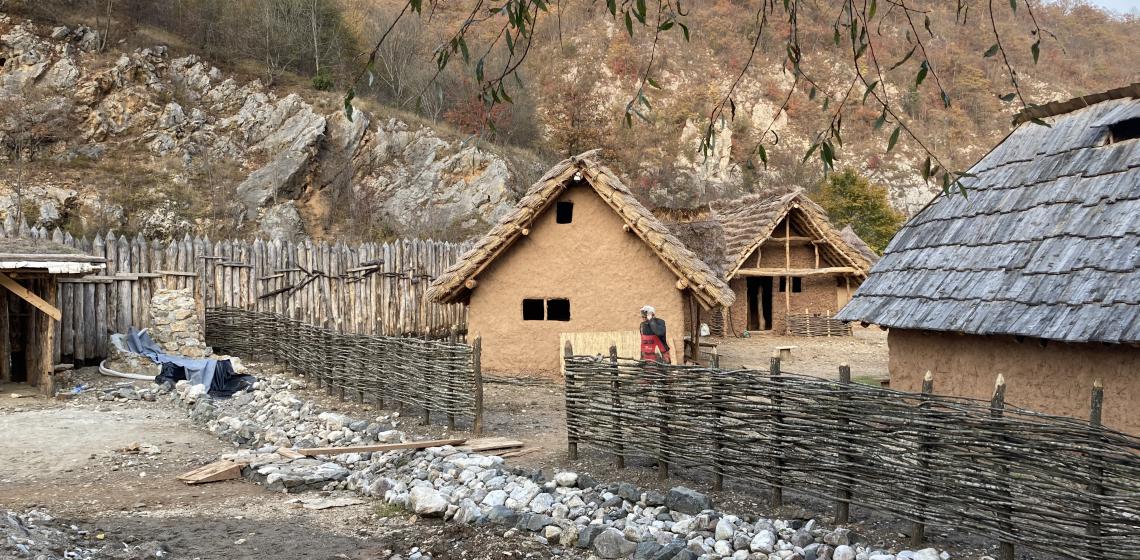
The Neolithic archaeological open-air museum StaPark has been built in the village of Stapary and very vicinity of the archaeological localities Velika Gradina and Mala Gradina where the Neolithic man’s natural environment has been recognized and mainly researched.
A settlement of 1.500 square meters, consisting of four wattle and daub houses and one half pit-house, is built and furnished in accordance with lifestyle of Neolithic man. Exhibitions dedicated to the clothes producing, leather processing, tools crafting, processing the ceramics and weapons and preparing food of a Neolithic man are the museum’s permanent exhibition.
In a customized environment, visitors have access to animation programs in the field of pottery, bone and stone processing, as well as the preparation of Neolithic food. The youngest visitors are offered the educational workshop in experimental archaeology. Slightly more skilled visitors can also try their hand at using the bow and arrow at the archery facility located within the settlement.
Enclosed space for demonstrations, presentations, educational workshops, trainings and promotions is provided in a separate building showing a house from the Bronze Age, which has been identified at the original archeological sites and is a proof of the continuous human life in this area. The modernly equipped interior enables the organization of events in accordance with the contemporary needs of the audience.
Built from natural materials and techniques characteristic of the Neolithic period with the comprehensive support of the professional public, this archaeological open-air museum is a unique tourist attraction of the wider area. The main function of the park is education and animation of visitors of all ages with the creation of conditions for scientific and research work.
As newly established, StaPARK (2020) represents an effort to protect, preserve and present Neolithic cultural heritage to the professional and general public, by providing opportunities for life-seeing and life-participating models for presentation of cultural heritage in order to discover and experience something new and authentic. This resource has been developed through time as a result of the mutual connection between nature and life of the local inhabitants having natural, ecological, esthetic, historical and cultural values, and whose preservation demands maintaining relationship between a man and nature.
Text and images: Neolife team
